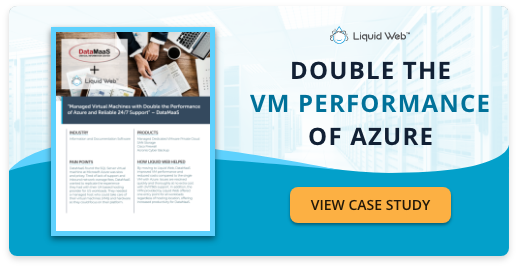Platform-as-a-Service (PaaS) is one of the most popular cloud computing models. It allows developers to build, test, and deploy applications without worrying about the underlying infrastructure. Take a closer look at PaaS and how it can benefit you.
What is Platform-as-a-Service (PaaS)?
Platform-as-a-Service (PaaS) is a cloud computing model designed to provide developers with the tools they need to build applications while spending less on infrastructure. This makes PaaS an attractive option for developers who want to focus on development. Furthermore, PaaS includes many services, such as data storage and performance monitoring.
PaaS is often compared to Infrastructure-as-a-Service (IaaS) and Software-as-a-Service (SaaS) as it sits between these two models in terms of functionality. PaaS provides more flexibility and control than SaaS but offers a different level of customization and scalability than IaaS.
How does PaaS work?
PaaS works by providing developers with a ready-made environment for developing applications. Developers often use PaaS to create and deploy web applications quickly and easily. This environment includes web servers, databases, a development environment, and reporting.
Some popular PaaS providers include Salesforce, AWS, Google App programming, and Azure App Service. A service is typically charged by usage or subscription, making it a more cost-effective option than investing in infrastructure. PaaS is used for developing new applications, and automating processes.
Businesswire reported that the global PaaS market is expected to grow from $49.41 billion in 2021 to $57.15 billion in 2022 and reach $96.24 billion by 2026. This growth is a phenomenal indicator that PaaS will continue to gain importance to organizations worldwide.
Leveraging the possibilities, however, requires understanding the benefits of PaaS for businesses and developers alike.
Benefits of PaaS for Businesses and Developers
Benefits to Businesses
- Reduced Costs: With PaaS, businesses can avoid the expenses associated with purchasing hardware and software. Instead, they can pay for only what they use on a per-use or subscription basis. This leads to significant savings over time.
- Stronger Operations: By using PaaS, companies can offload the burden of managing infrastructure to the PaaS provider. This frees up valuable resources that can be better used to focus on core business activities. In addition, PaaS can help businesses improve their agility and responsiveness. PaaS also brings an environment that helps streamline operations.
- Improved Management: Most PaaS providers offer various tools to track their applications’ performance and identify any issues. This helps businesses manage and monitor their applications more effectively and gain valuable insights for further improvement.
Benefits to Developers
Along with the benefits that businesses can enjoy, developers gain several benefits with PaaS. These include:
- Increased Productivity: Developers are free to focus on developing applications rather than worrying about managing and maintaining the underlying infrastructure, thus improving productivity.
- Improved Collaboration: By using PaaS tools, different teams of developers can share resources and information quickly. It also allows room to assign tasks and manage ownership of projects.
- Greater Flexibility: Developers are free to develop without being constrained by the underlying infrastructure. This freedom allows developers to experiment and innovate more, which leads to better-quality applications.

Deciding if a PaaS is Right for Your Business
When deciding if a PaaS is suitable for your business, there are several factors that you should take into account:
The Size of Your Business
PaaS can be a good option if you are a small business with limited resources. PaaS can help reduce costs and improve efficiency by allowing you to offload the burden of managing infrastructure to the provider.
The Type of Applications You Develop
If you develop complex applications that require a lot of resources, there may be better options than PaaS. PaaS can help simplify the development process, but it may not be able to provide the scalability and flexibility that you need as compared to IaaS.
Your Needs
An essential factor to consider is your needs. You should evaluate if a PaaS cloud computing model can meet the needs or requirements of your business. Even if it can, it’s critical to understand that PaaS also has limitations. For example, if you need complete control over the underlying infrastructure, then PaaS may not be suitable.
Challenges Associated With PaaS
PaaS can be an excellent option for businesses and developers who need a ready-made environment for developing applications. However, it is essential to consider the challenges associated with it before making a decision. So what are some difficulties with PaaS that you should be aware of?
Proprietary Lock-in
Proprietary lock-in occurs when businesses rely on a single provider for all their needs and accept the status quo. To remediate this, companies need to research all available options.
Limited Control
PaaS offers little control over applications. This is because the provider controls the underlying infrastructure, which often impacts what can be done. This can lead to problems if there are changes or disruptions in the service. Understanding the service-level agreement (SLA) and developing a plan against disorders can help avoid this problem.
Security Concerns
Since a third party manages the underlying infrastructure, businesses inevitably expose themselves to potential risk. Before choosing a provider, ask about both their security policies and procedures against security breaches.
The Future of PaaS
The future of PaaS looks promising. With the undeniable growth of the global PaaS market, the opportunities and possibilities for businesses of all shapes and sizes are immense. In addition, providers will continue to improve their services, making PaaS even more attractive for businesses and developers.
Liquid Web can help you decide whether PaaS is right for you and which platforms, like the applications offered in VMware Cloud Services, to consider. Contact the Most Helpful Humans In Hosting® to learn more about using Platform-as-a-Service in your business.





